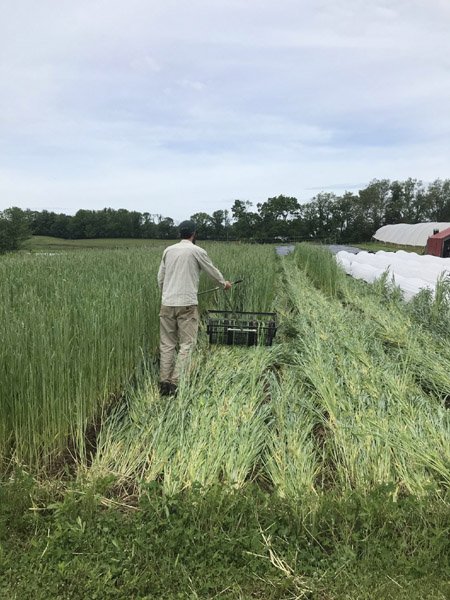No-till Farming
I don’t often write a lot about our growing methods.
Yes, we’re certified organic. No, we don’t ever use pesticides, herbicides or fungicides in our production.
But in general, it’s much more enjoyable, for me and probably you as well, to think about the final products: the tasty veggies and beautiful flowers.
Before we start the harvest season in just a few short weeks, here’s a brief overview of our growing methods and how they’ve evolved.
When we started, back in 2014, we used standard tillage practices.
Meaning we used a rototiller to pulverize the soil before planting into loose, weed free beds.
There’s a pristine look at first, but the weeds start creeping back in almost immediately.
Eventually, we learned that tilling just brings a lot of new weed seed up to the surface so it can finally grow after being buried for a year or two.
Once these beds get weedy, they get overwhelming quick.
So we stopped tilling and starting using other methods of weed control.
Now our early spring productions looks like this.
Instead of tilling, we use the cover crop debris and compost as mulches.
Since we’re not bring up new weed seed every year, our weed-seed bank has been reduced and can be managed by hand weeding.
The asthetic isn’t quite as neat as tilled beds. At least at first.
But weeks later, these beds usually remain quite manageable in terms of weeds.
So our veggies and flowers grow easier, and we can spend more time harvesting and less time weeding through the year.
This is the work that fills our days here in late April and early June.
Lots of wheel barrowing compost around and transplanting.
Meanwhile, we have several plots with over-wintered covers crops (rye, crimson clover, etc.) that are exploding with growing.
These beds will continue to grow for the next month or so before they start flowering and going to seed.
We have a couple of methods for dealing with these.
METHOD ONE
We simply roll down the cover crop and cover with a silage tarp for a 2-3 weeks to terminate it.
Then we remove the tarp and transplant directly through the rolled down straw that has become a grown-in-place mulch.
This sequence works best for a our winter squash and our fall brassica (cabbage, kale, collards, radishes, etc.) plantings.
It’s take a lot more time to plant these crops through the straw as opposed to a freshly tilled bed.
But the enduring weed control is well worth it.
METHOD TWO
For most of our nightshade crops (peppers, eggplant and second planting of tomatoes), we use a different sequence.
These get planted about the same time as our overwintered cover crops are maturing.
So instead of rolling down and tarping for a few weeks, we have to expedite the process.
Each year, we grow a couple of extra plots of rye and crimson clover that we cut down in late May.
We then carry that straw over to mulch our nightshade beds, and then transplant through that mulch.
Of course there are so many other ways to go about no-till growing and growing in general. This is just how we do it right now.
I could go into more detail about how these methods relate to soil health, moisture control, nutrient cyclying and such.
In truth, it was simply the improved weed control that sent us down this path to begin with. And that alone has been worth it so far.

















